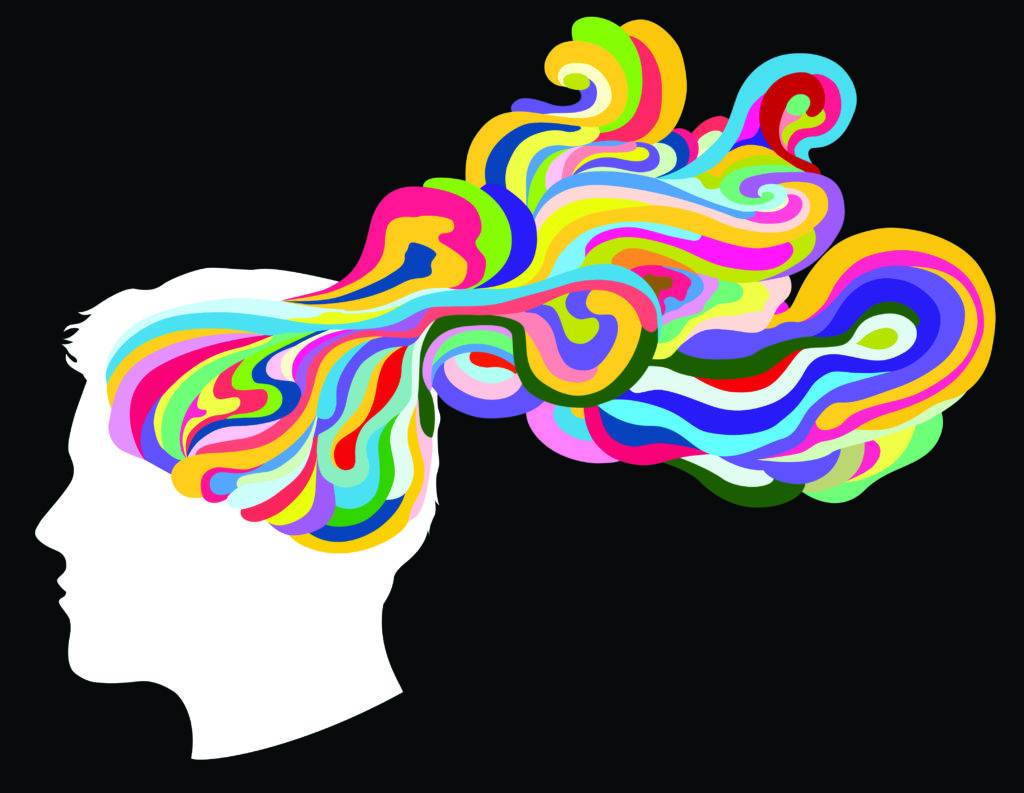BY JAMES OLSON
You want to write, to paint, to choreograph a dance that has been swirling in your mind, compose a symphony, or make the most amazingly beautiful chocolate cake ever. So where do you start? You start by thinking about your creation, setting the gears in motion. We rarely think about what our brains do when we start our creative process, but if we have a sense of how our brains process our ideas and which hemisphere is our default, we can very likely enhance our project, as well as enjoy discovering that we can consciously manage our minds to empower our creative efforts.
Everything we see, hear, and otherwise sense is filtered through the brain prior to percolating to the conscious mind. For this reason, the findings of brain science can be of immense value in helping us understand our creative abilities. We are all creators. Our choices, whether consciously or unconsciously made, create our experience of life; they determine how we feel, what we think, and how we act. To better understand how we can consciously affect the outcome of our creative process, let’s take a closer look at the brain’s contribution.
The brain is laterally split into two hemispheres. Each of the brain’s hemispheres has its own specialized management system that coordinates and operates its various parts, and each operating system is a creative system. This effectively splits our creative persona into two parts.
The relationship of the two sides of the creative brain is one in which each side has its own “world of consciousness,” a discovery that earned Roger Sperry a Nobel Prize in 1981. Sperry found that “each had its own world of perceptual experience, emotions, thoughts, and memory completely out of reach of the other cerebral hemisphere.” This then is the dynamic in which we create: working with two systems that are often at odds over how to do something.

To find a good example of a cultural effect of the brain’s creative split, we can look at how differently extreme liberals and extreme conservatives go about the process of creating solutions to individual and cultural problems. We see another vivid example of the split in the stereotypical differences between left-brain-male and right-brain-female thinking.
Right- and left-brain systems complement one another. To acquire the things we want from our creative pursuits, the left brain aggressively pursues them. The right brain, in contrast, relies on the power of attraction to create. It offers people something they want—beauty, wealth, information, power, sex, or some other aspect of unity—and pulls them in.
Although the right brain is commonly associated with creativity, and the left is considered to be analytical (which is a separative, deconstructive process) both sides of the brain are involved in the creative process. To sculpt a statue we must chip away and separate material from a greater whole, a task of the left-brain’s separative system. At the same time we must hold a vision of the completed whole, a task of the right brain.
Ideally, the two creative systems function as an integrated unit; however, in a majority of us, brain dominance (genetic complete dominance) selects one of these systems to oversee our creative efforts. So although both creative systems are always at work processing creative data, for most of us, only one of the two is actually running the show. That one will dominate the process and could limit the other system’s ability to contribute—unless we consciously choose to use our brain in a more balanced manner.
Through power of mind and intention, the two creative systems are under our control. Once we know that we have an option, the only thing left is to understand the choices that the two sides of the brain give us. The two operating systems offer us diverse viewpoints, differing attitudes, contradictory temperaments, and complementary skills. Each system has its strengths and weaknesses. But brain dominance does not lock us into one creative style or another except as a default system. It sets us off on a creative path.
The brain is a creative instrument in service to mind and spirit. The option to consciously and creatively manage the mind is ours for the taking. If the ultimate creation is the self, then wise management of information using the whole of our brain is our ultimate creative endeavor.
James Olson is an integral philosopher whose mission is to help bring the planet’s masculine (dualistic left-brain) and feminine (holistic right-brain) energies into greater harmony through his advocacy of whole-brain thinking. He is the author of How Whole Brain Thinking Can Save the Future. TheWholeBrainPath.com